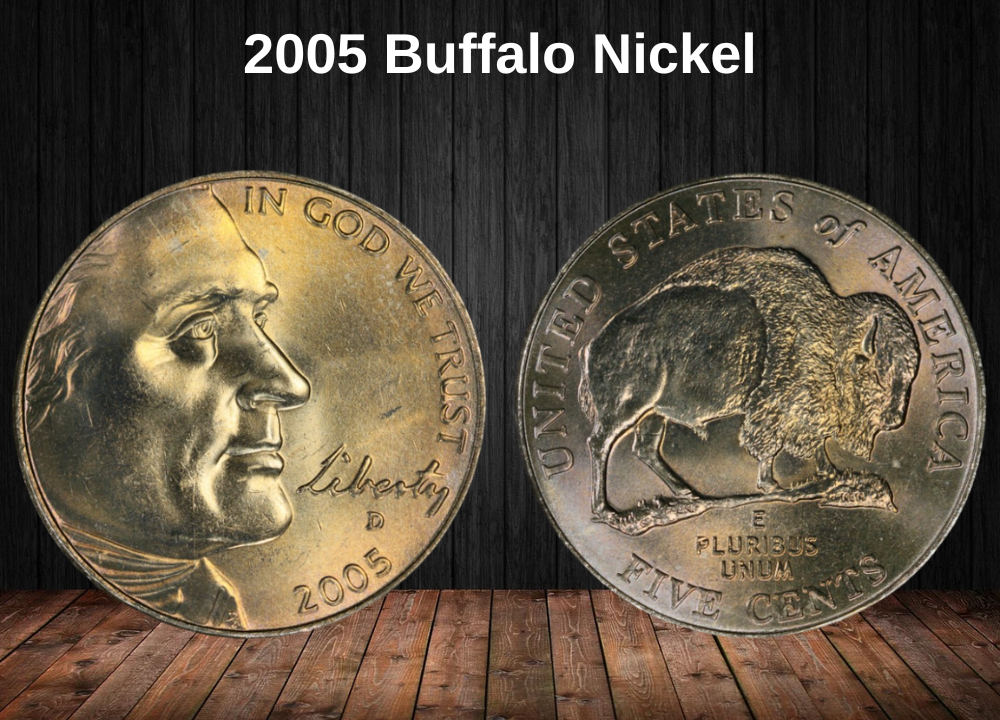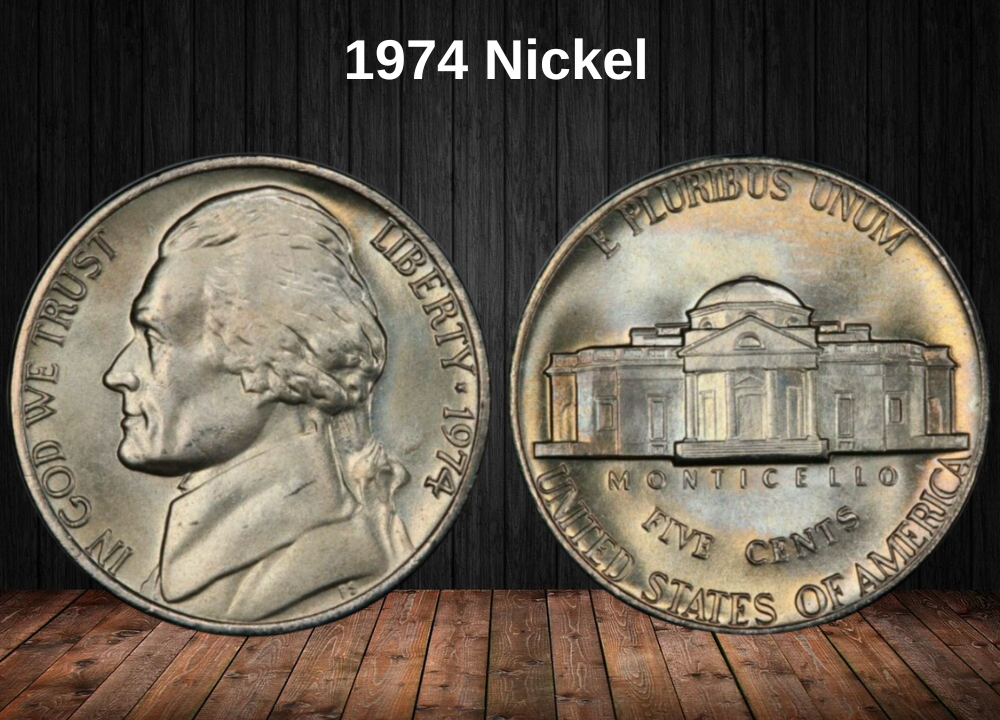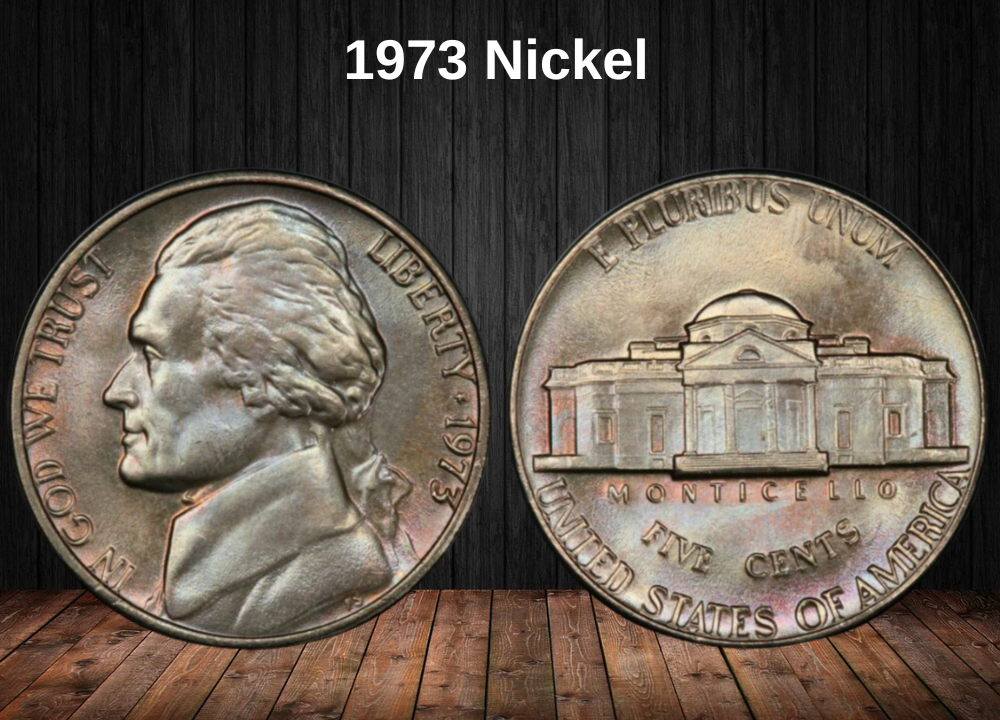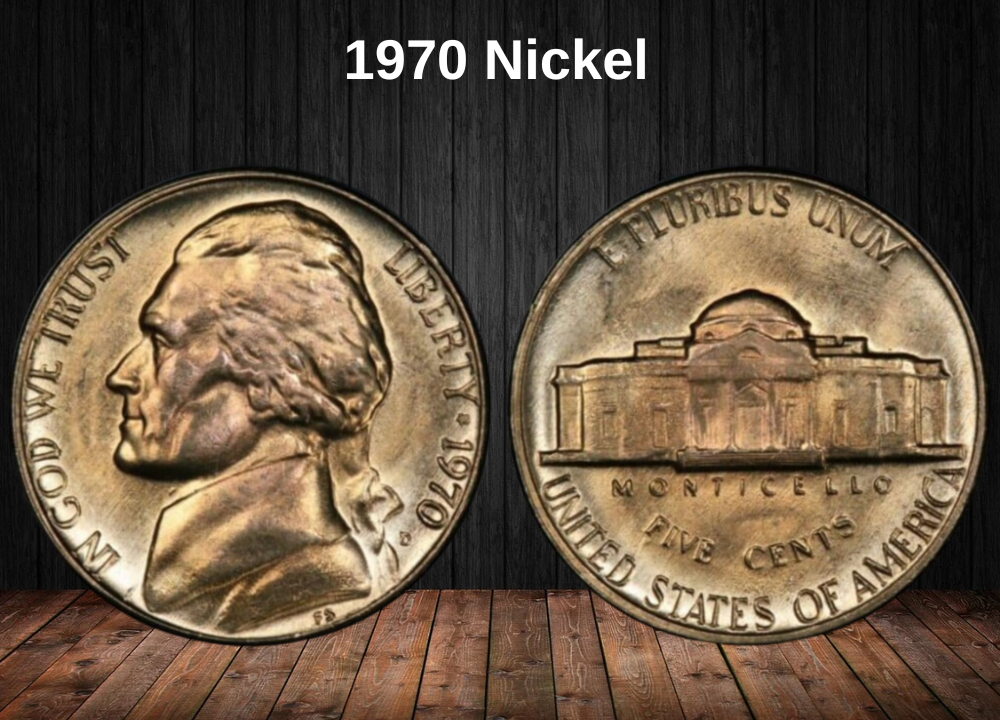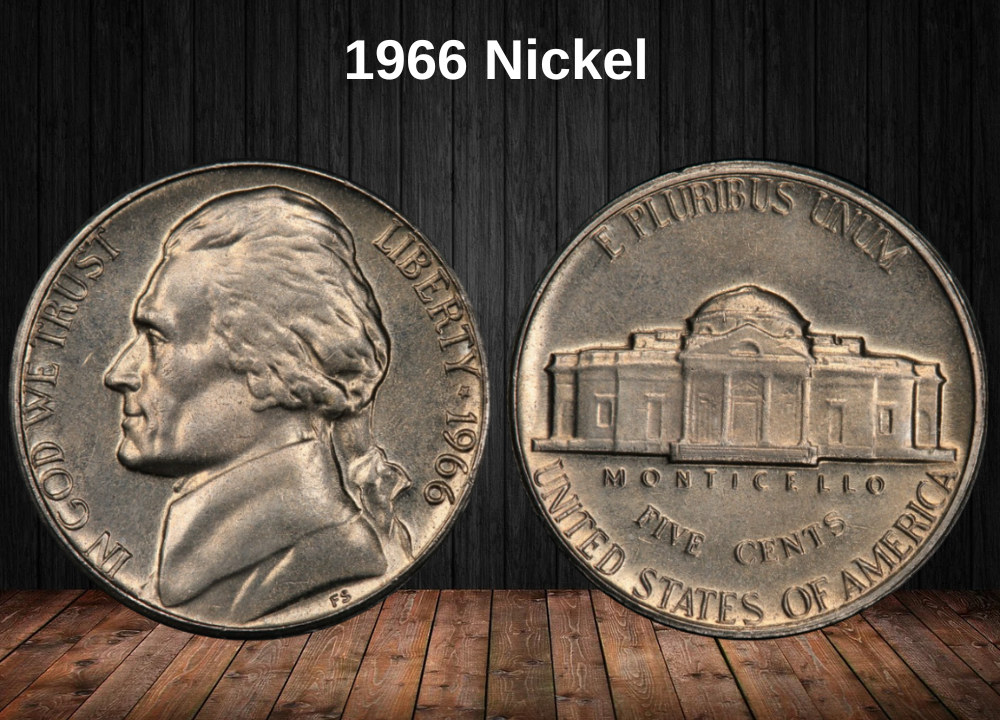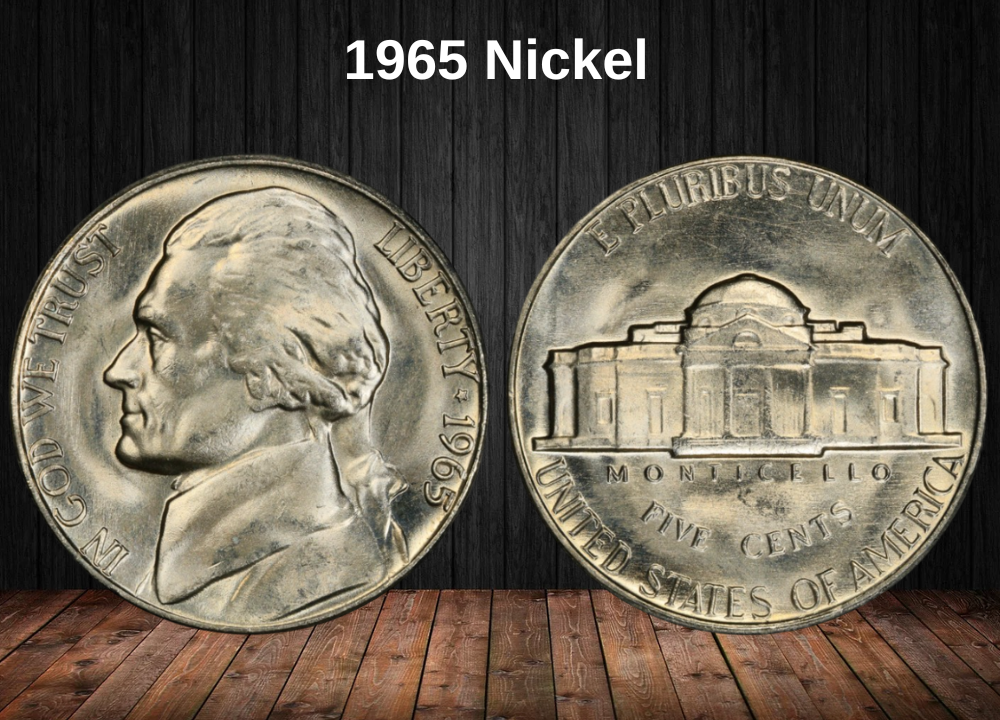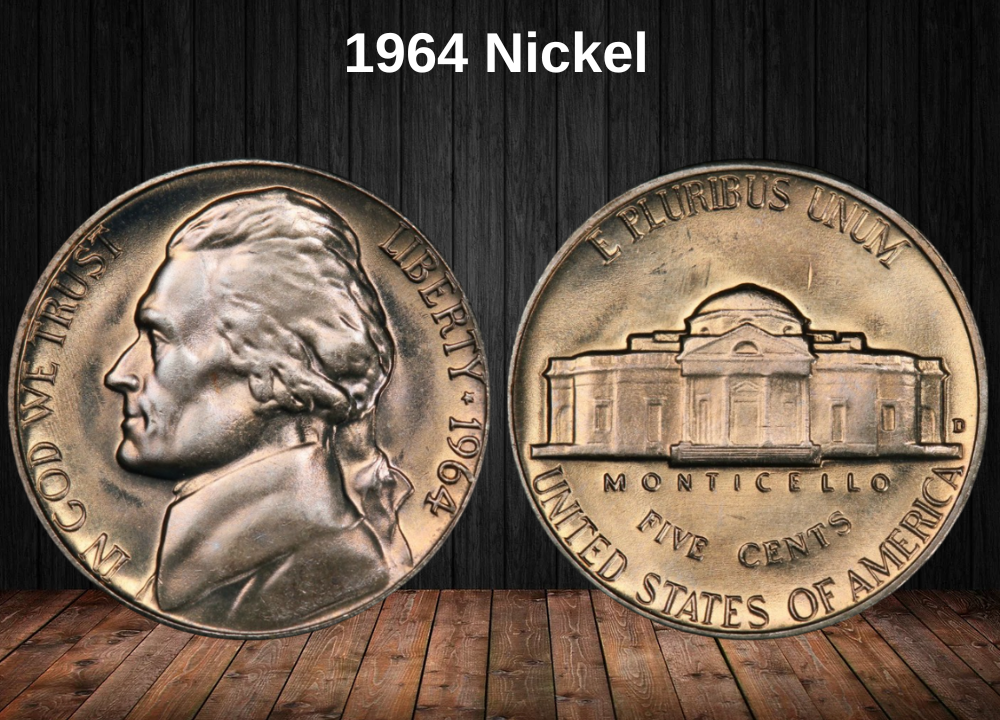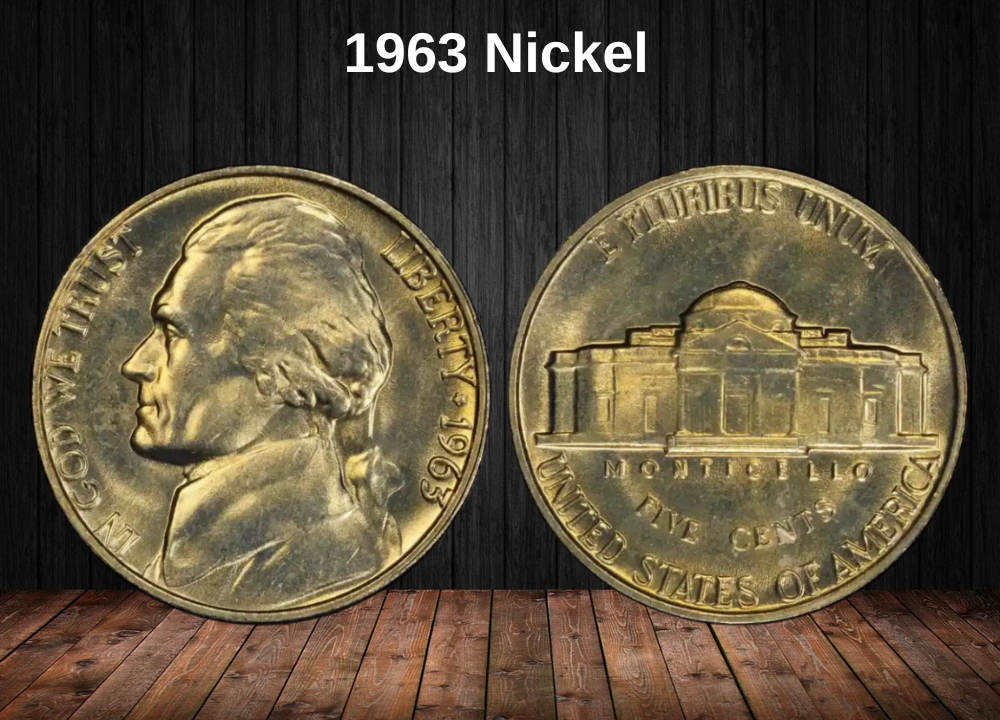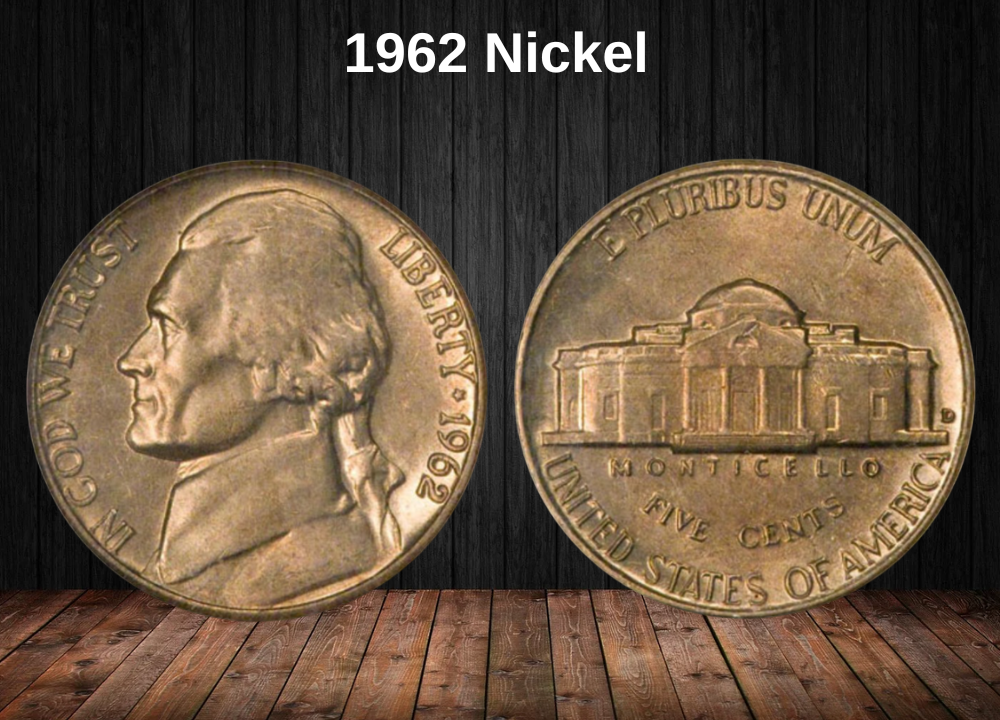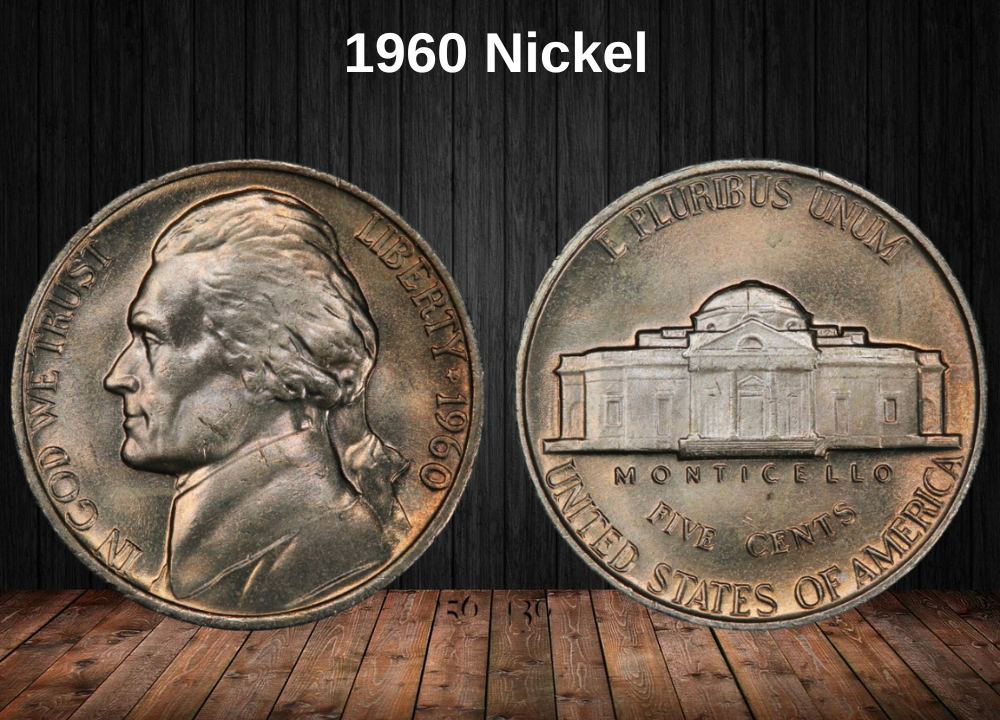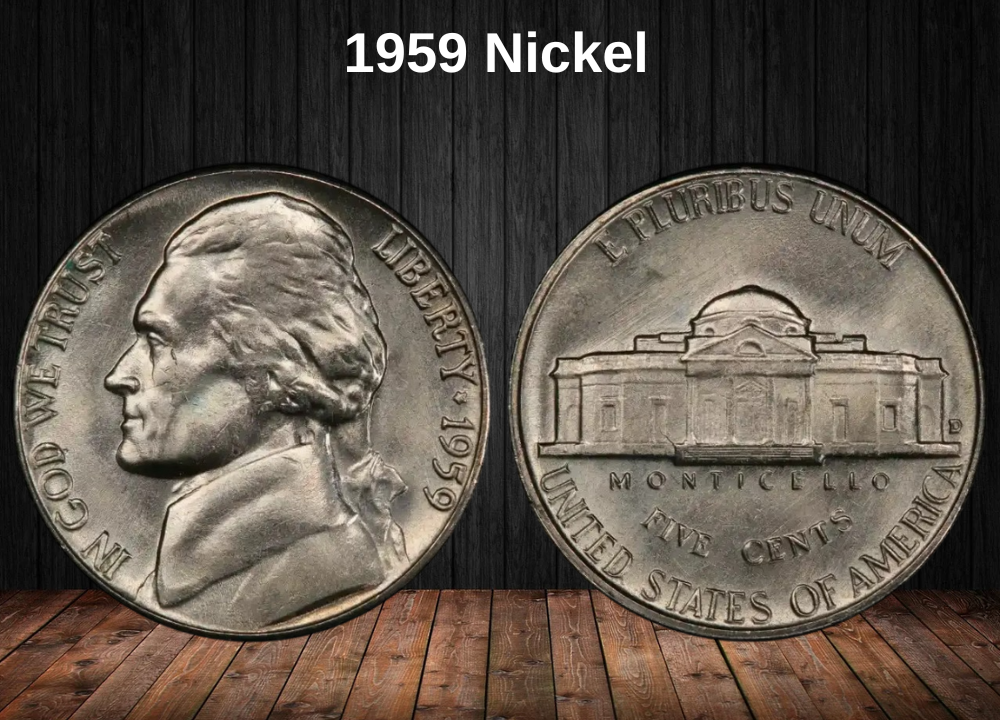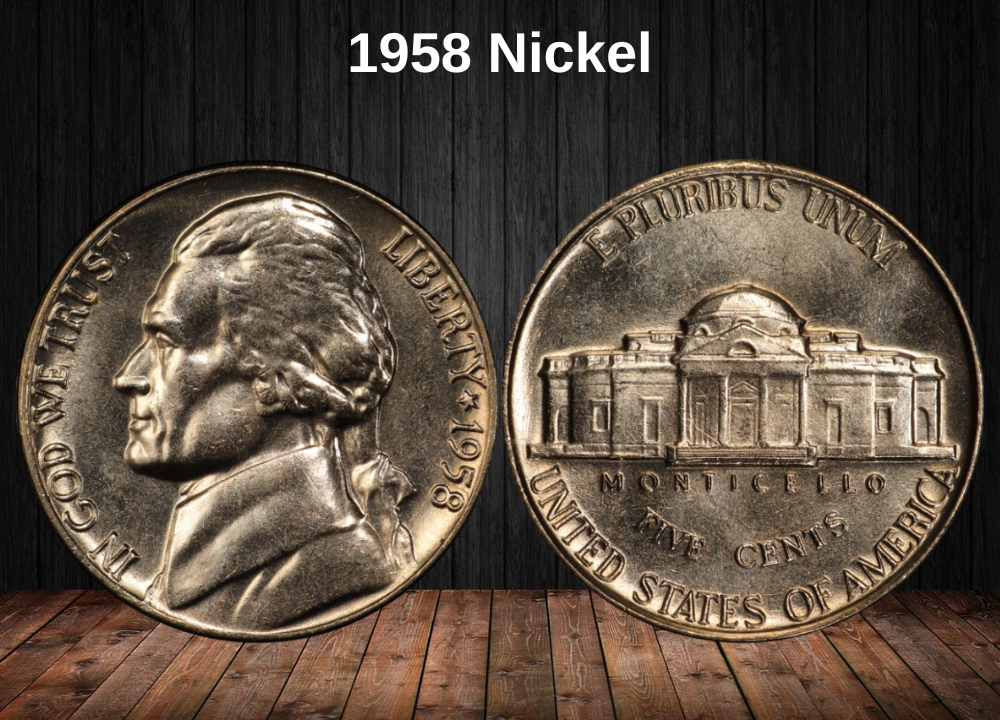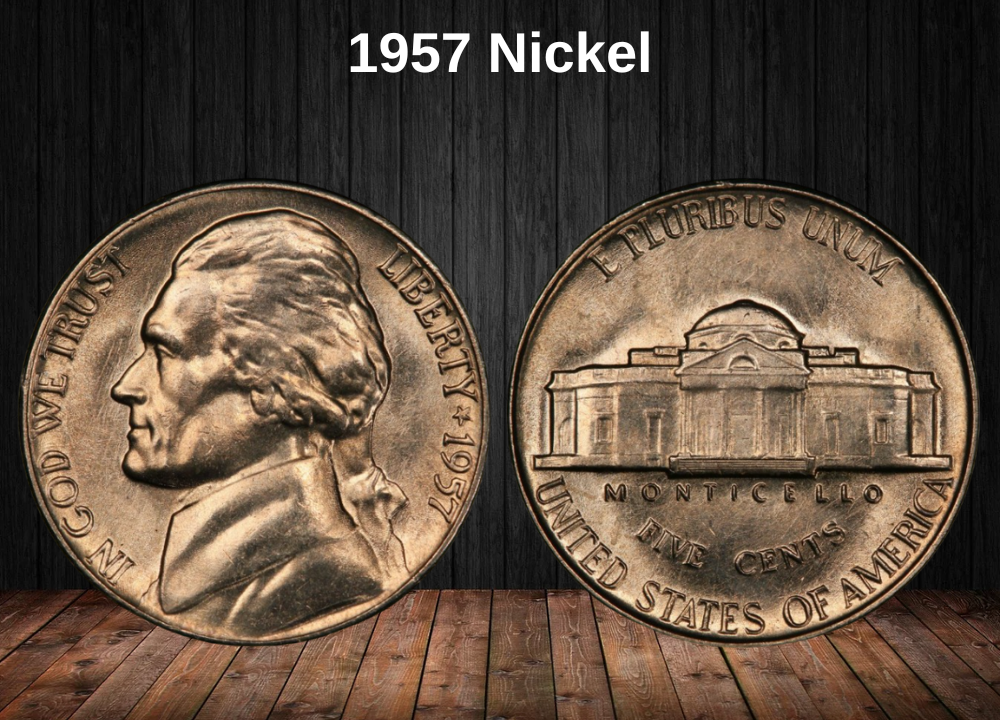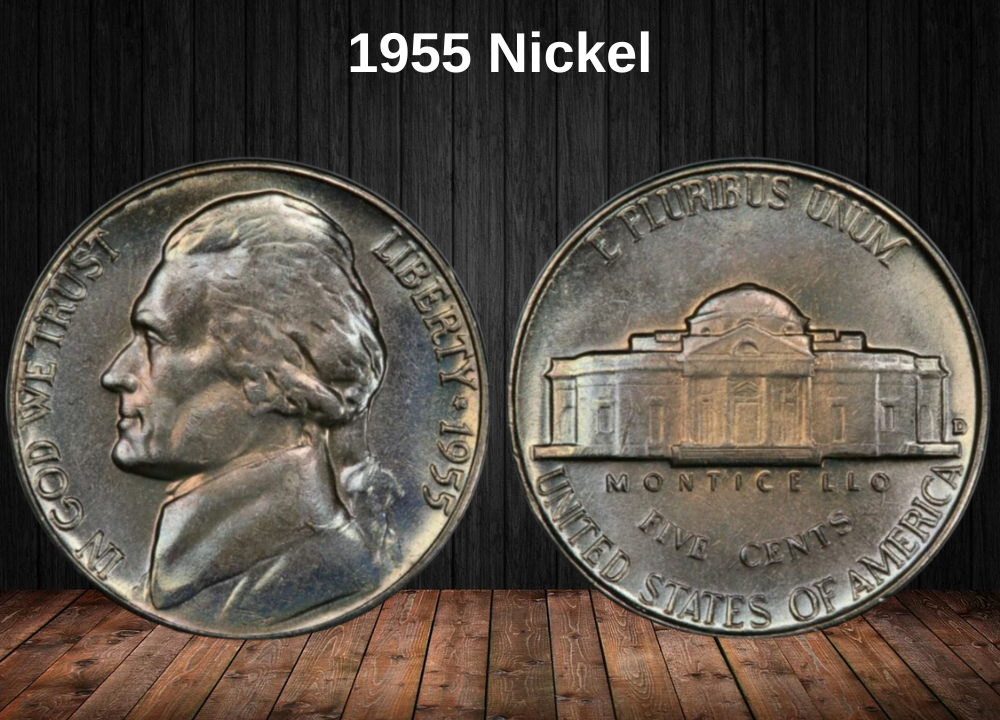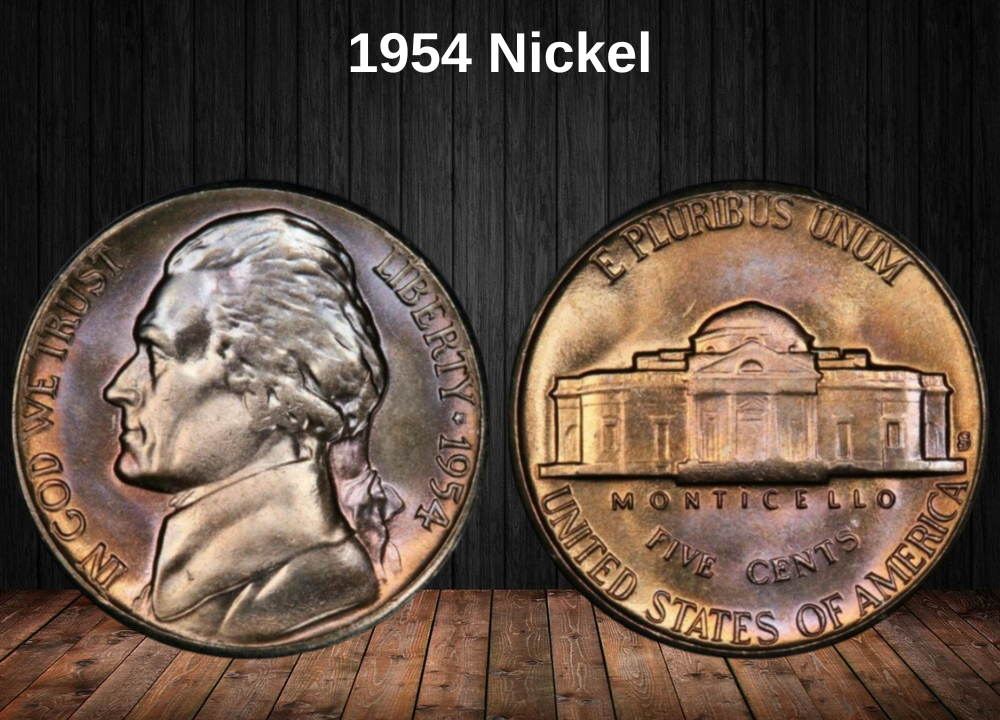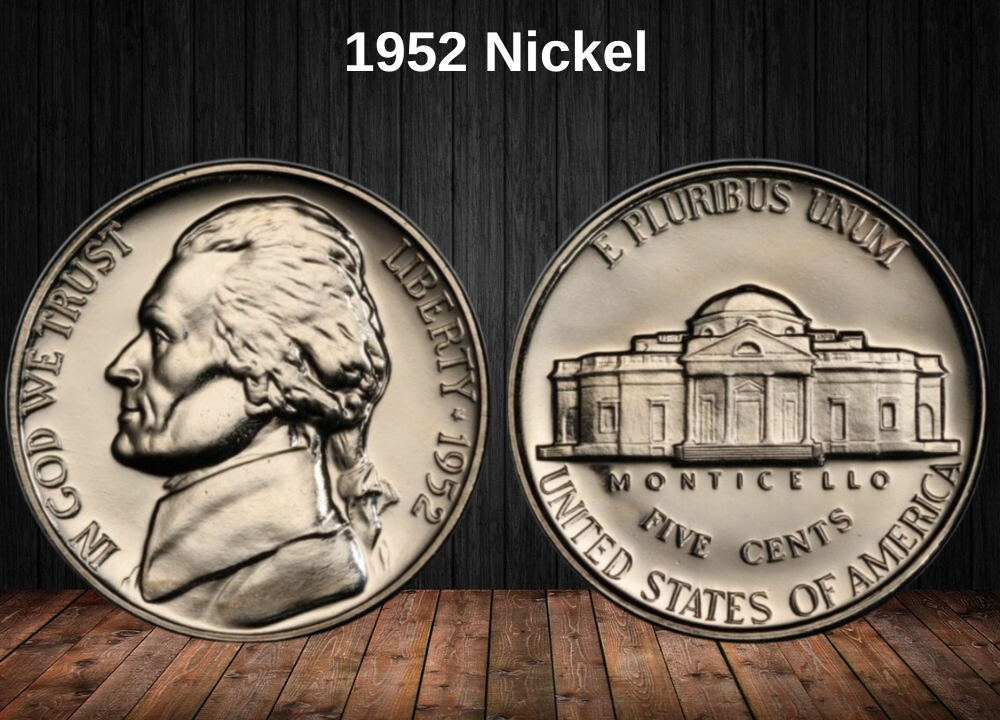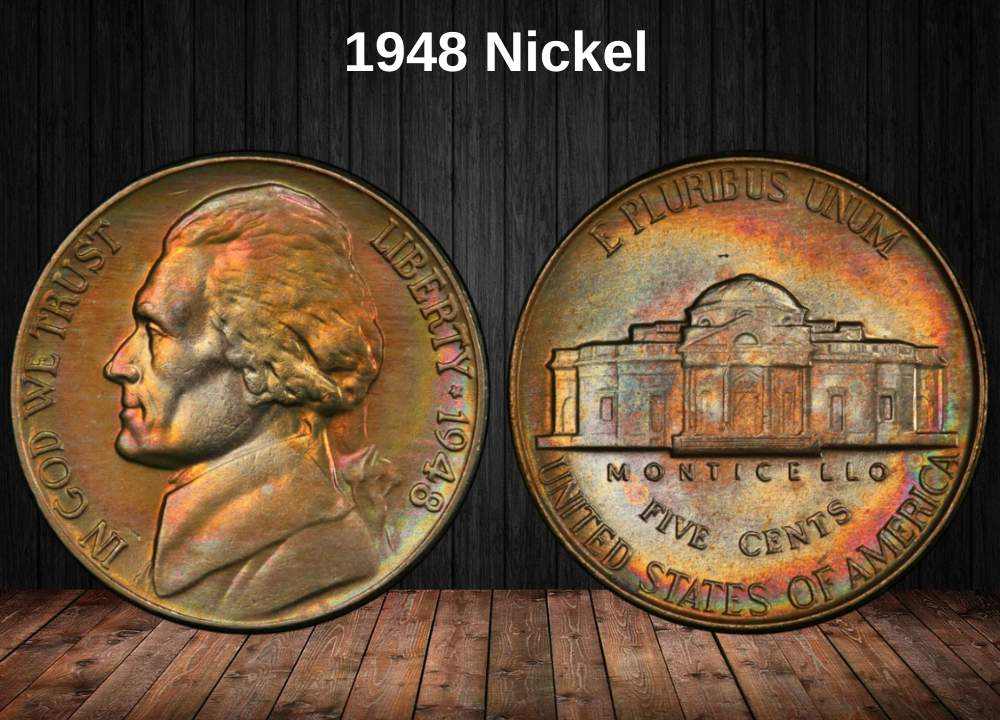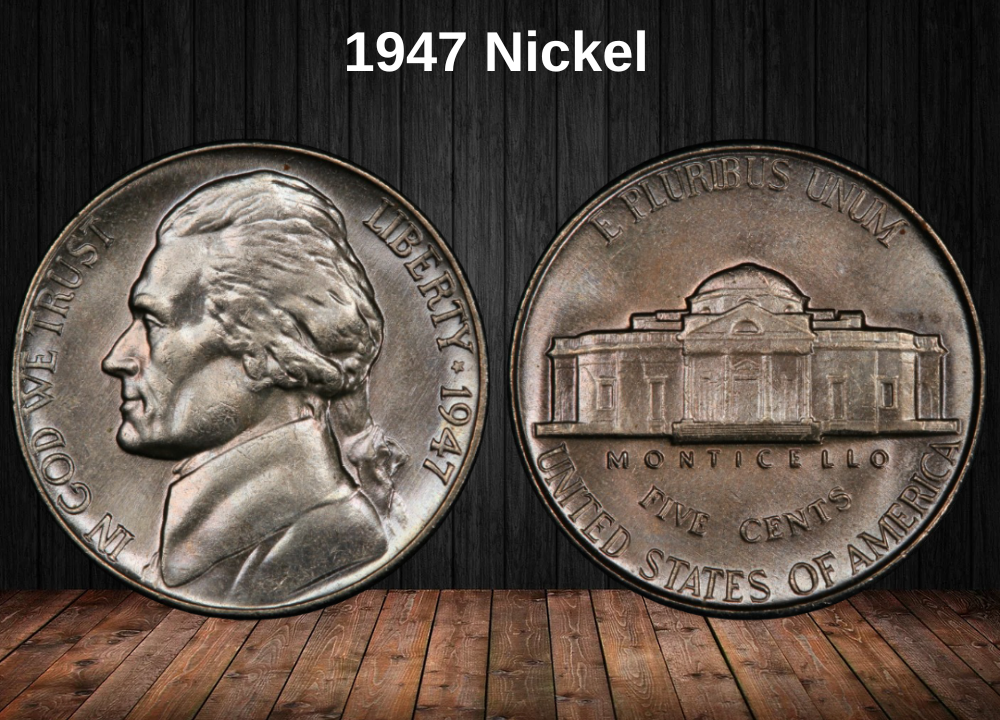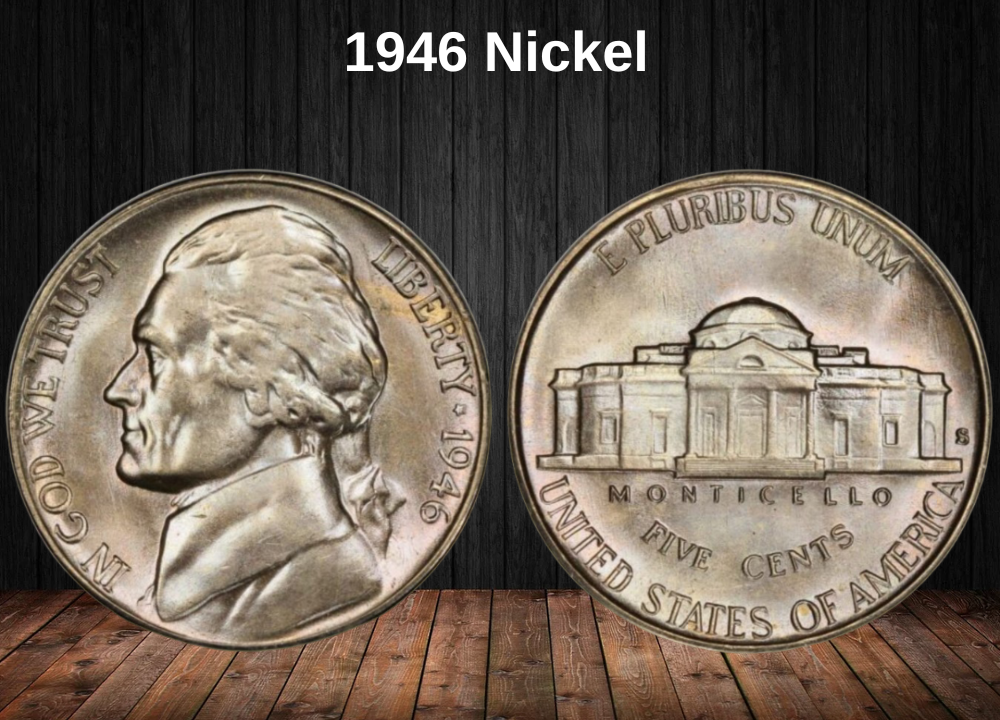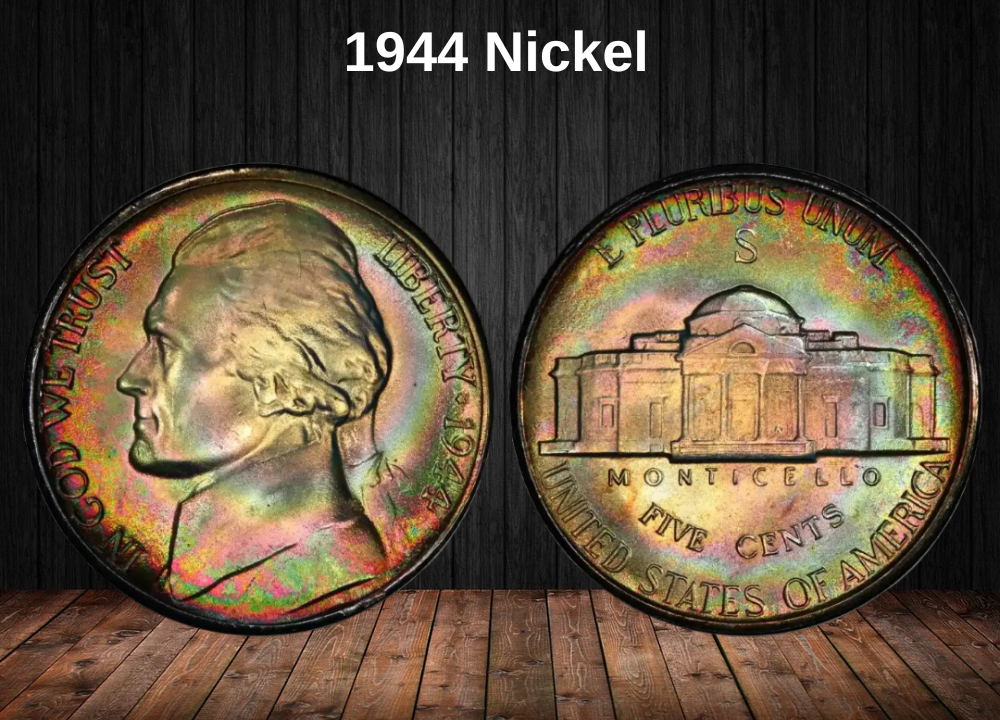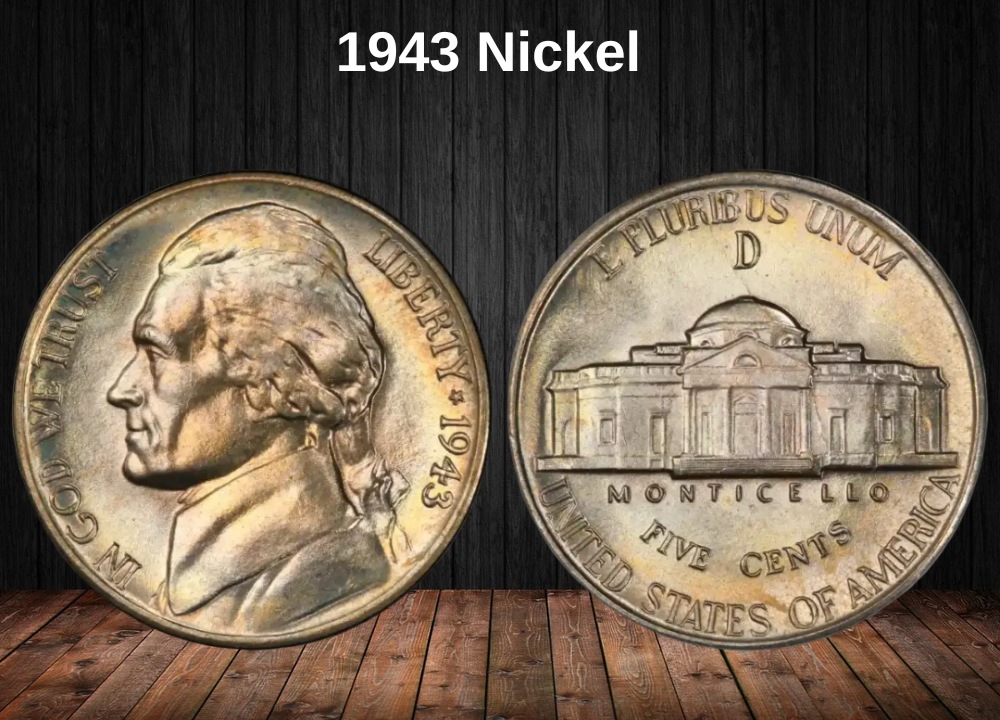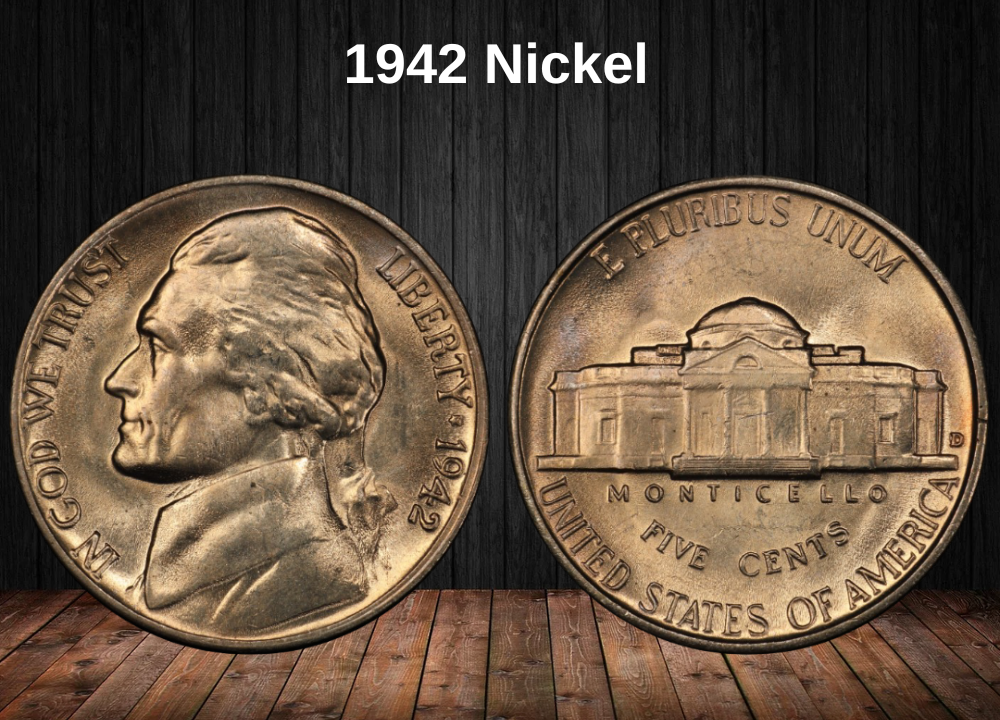The 1976 Jefferson nickel is a five-cent U.S. coin produced at three different mints.
- Philadelphia struck coins without a mint mark.
- Denver produced regular circulation strikes with the letter “D”.
- San Francisco issued only proof coins for collectors.
The value of a 1976 nickel depends heavily on its origin, strike type, and condition. While most are worth only face value in circulation, higher-grade examples and special varieties can bring in notable premiums.
1976 Nickel Value Chart
| Condition | 1976 (No Mint Mark) | 1976-D Nickel | 1976-S Proof |
|---|---|---|---|
| MS 60 | $1 | $1 | — |
| MS 65 | $18 | $14 | — |
| PR 65 | — | — | — |
History of the 1976 Nickel

The Jefferson nickel was introduced in 1938 as the successor to the Buffalo nickel, which had been in circulation since 1913. While the Buffalo design was popular, the U.S. Mint faced ongoing challenges with striking quality, prompting the change. The new coin honored Thomas Jefferson, the 3rd President of the United States and a principal author of the Declaration of Independence. Jefferson, born in 1743, was also an architect and lawyer, though history notes that he enslaved more than 600 African-descended individuals at his Monticello estate.
To select the new design, the Mint held a public competition in 1937. Out of 390 submissions, Felix Schlag, a German-born artist, won with a clean and elegant concept featuring Jefferson’s profile on the obverse and Monticello, his iconic home, on the reverse. Schlag’s initials, “FS,” were not part of the original design but were added in 1966.
1976 Nickel Production by Mint
| Mint Location | Variety | Mintage |
|---|---|---|
| Philadelphia | 1976 nickel | 367,124,000 |
| San Francisco | 1976-S proof nickel | 4,149,730 |
| Denver | 1976-D nickel | 563,964,147 |
| Total | — | 935,237,877 |
Originally, mint marks appeared on the reverse of Jefferson nickels (to the right of Monticello) until 1964. The only major composition change came during World War II (1942–1945), when nickel was removed from the alloy in favor of a copper-silver-manganese mix, and the mint mark was moved above Monticello. In 1946, both the original cupronickel composition and the mint mark’s location were restored.
By 1976, the design remained almost identical to the 1938 version, except for the mint mark placement.
Features of the 1976 Jefferson Nickel
Designer: Felix Schlag
Composition: 75% copper, 25% nickel
Weight: 5 grams (0.18 oz)
Diameter: 21.21 mm (0.84 in)
Thickness: 1.95 mm (0.08 in)
Edge: Plain
Face Value: $0.0
Obverse (Front)
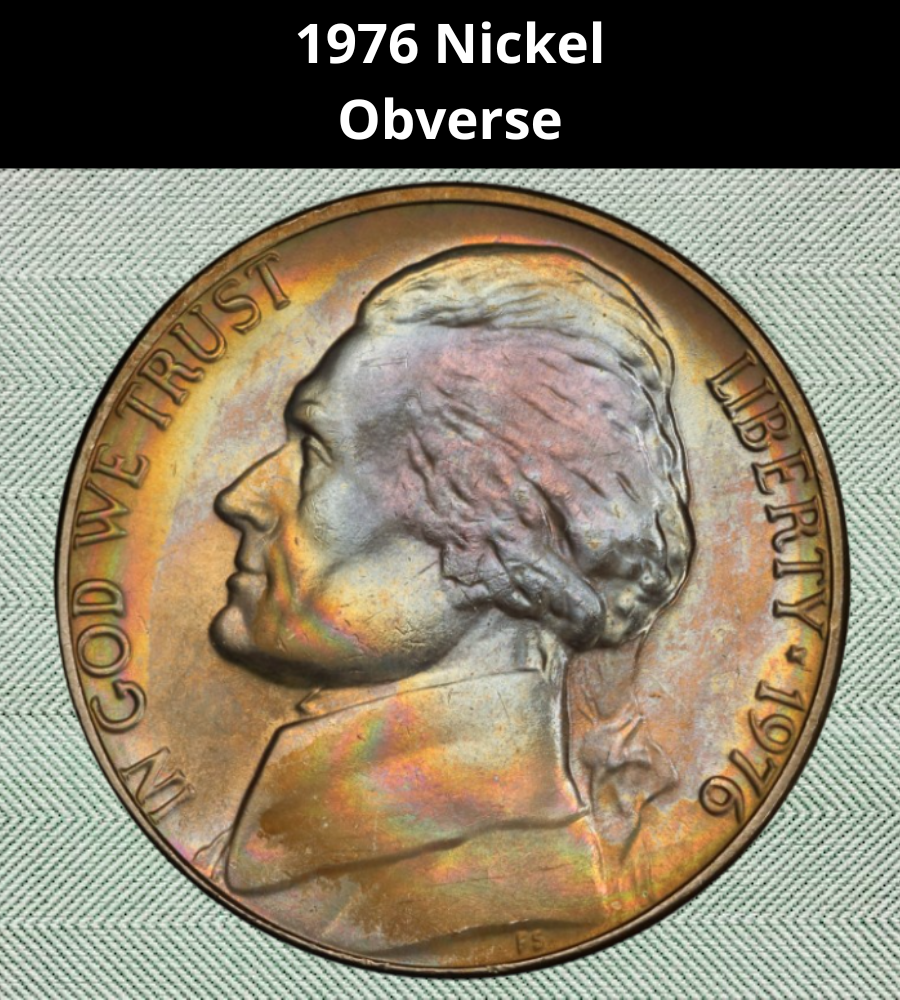
The obverse features a left-facing bust of Jefferson, complete with his 18th-century wig. To the left is the motto IN GOD WE TRUST, adopted officially in 1956 but used on U.S. coins since the Civil War. On the right, the word LIBERTY is separated from the date “1976” by a small star. Below Jefferson’s collar, the initials FS honor designer Felix Schlag.
Reverse (Back)
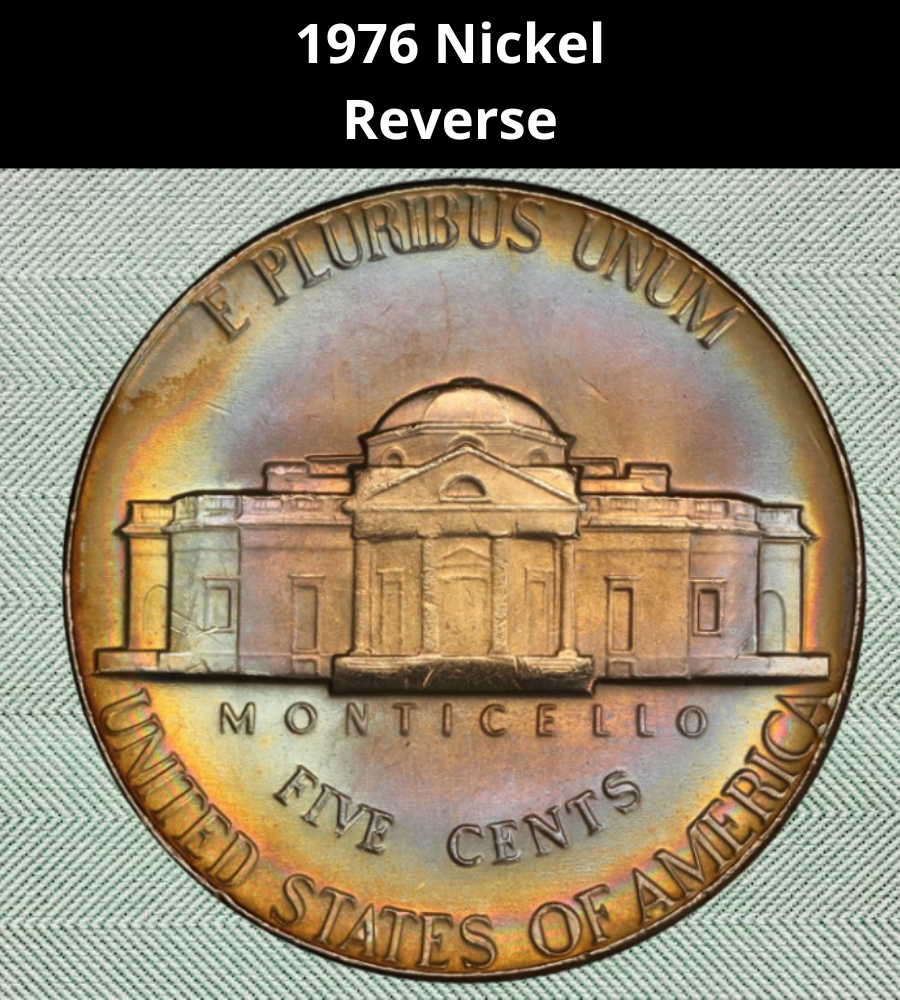
The reverse is dominated by an image of Monticello, Jefferson’s famous neoclassical home. Just beneath the building is its name, while the Latin motto E PLURIBUS UNUM arcs along the top rim. The denomination FIVE CENTS sits between the building and the inscription UNITED STATES OF AMERICA at the bottom. “Monticello” itself translates from Italian as “little mountain.”
Additional Details
The 1976 Jefferson nickel’s cupronickel alloy gives it a bright, silvery tone. At 1.95 mm thick, it holds the distinction of being the thickest U.S. coin among small denominations. Despite the massive mintage, well-preserved coins—especially those with sharp “Full Steps” details on Monticello—remain popular with collectors.
Grading of the 1976 Jefferson Nickel
Determining the exact value of a 1976 Jefferson nickel starts with professional grading. This process evaluates a coin’s overall condition, taking into account factors such as surface luster, strike sharpness, presence of contact marks, mint mark placement, corrosion, and any notable minting errors.
Professional grading services like PCGS (Professional Coin Grading Service) or NGC (Numismatic Guaranty Company) assign a numeric grade based on the internationally recognized Sheldon Scale. On this scale, coins are rated from 1 (Poor) to 70 (Perfect Mint State).
| Grade Number | Grade Name | Description |
|---|---|---|
| 1 | Basal State-1 | Barely identifiable, heavily worn. |
| 2 | Fair | Major details mostly gone, outlines visible. |
| 3 | Very Fair | Slightly better detail than Fair. |
| 4–6 | Good | Major design elements visible but heavily worn. |
| 7–10 | Very Good | Some details remain, major wear. |
| 12–15 | Fine | Moderate wear, most details clear. |
| 20–30 | Very Fine | Light to moderate wear; strong details. |
| 40 | Extremely Fine | Only light wear on highest points. |
| 50 | About Uncirculated | Minor traces of wear, almost mint condition. |
| 60 | Mint State (MS60) | Uncirculated, few marks. |
| 65 | Mint State (MS65) | Choice uncirculated, strong luster, sharp strike. |
| 70 | Mint State (MS70) | Perfect coin, flawless under 5x magnification. |
Tip for Collectors:
Coins graded MS65 and above, especially with the Full Steps designation, often sell for significantly higher premiums. Even common-date Jefferson nickels like the 1976 can be worth hundreds—or even thousands—of dollars in these top grades.
1976 Nickel Value Guides
The market value of a 1976 Jefferson nickel depends on several factors:
- Mint of origin (Philadelphia, Denver, or San Francisco)
- Overall condition and grade
- Presence of Full Steps (FS)
- Rarity of mint errors
While these coins are common in circulation, uncirculated and high-grade Full Steps examples can be worth hundreds or even thousands of dollars.
1976 No Mint Mark Nickel (Philadelphia) Value
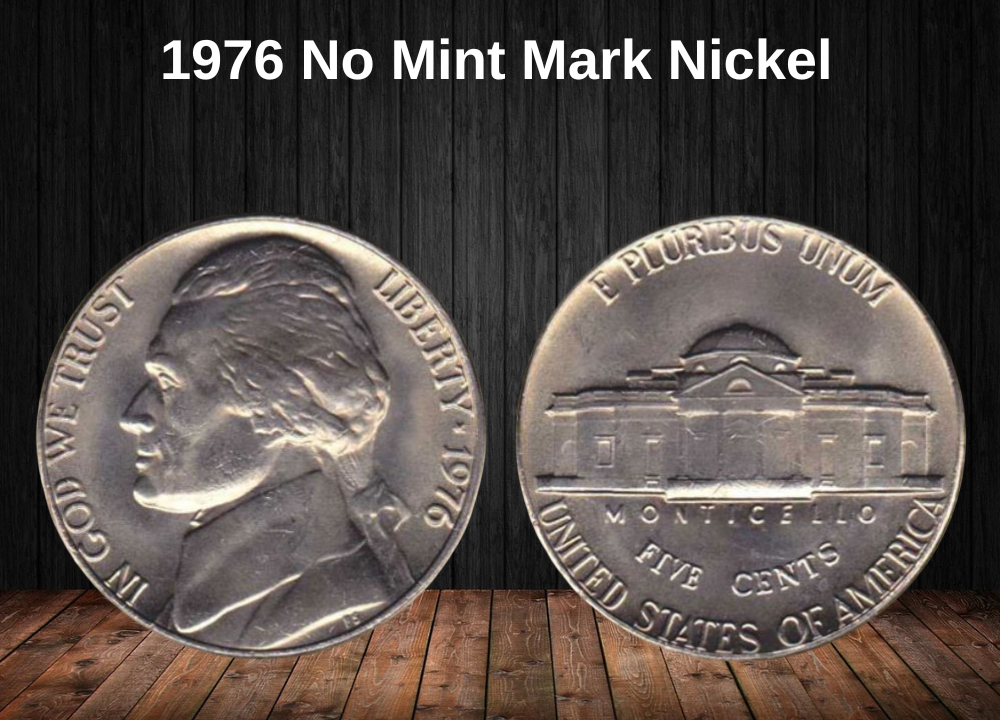
- Mintage: 367,124,000
- Circulated value: About $0.05 in XF–AU grades.
- Mint State (MS60–MS63): $1 – $6
- Higher Mint State (MS64–MS65): $6 – $12
- Premium grade (MS66): Around $45
- Auction record: A spectacular MS69 example sold for $2,175 on eBay in 2022.
Full Steps Varieties:
These carry a significant premium.
- MS64 FS: ~$42
- MS65–MS66 FS: $175 – $1,000
1976-D Nickel (Denver) Value

- Mintage: 563,964,147
- Circulated value: $0.05
- Mint State (MS60–MS63): $1 – $6
- Higher Mint State (MS64–MS65): $7 – $18
- Premium grade (MS66): ~$32
- Auction record: MS63 example sold for $1,700 on eBay in 2018.
Full Steps Varieties:
- MS64–MS65 FS: $11 – $20
- MS66 FS: ~$275
- Top grade MS67 FS: Estimated at $3,000
1976-S Proof Nickel (San Francisco) Value
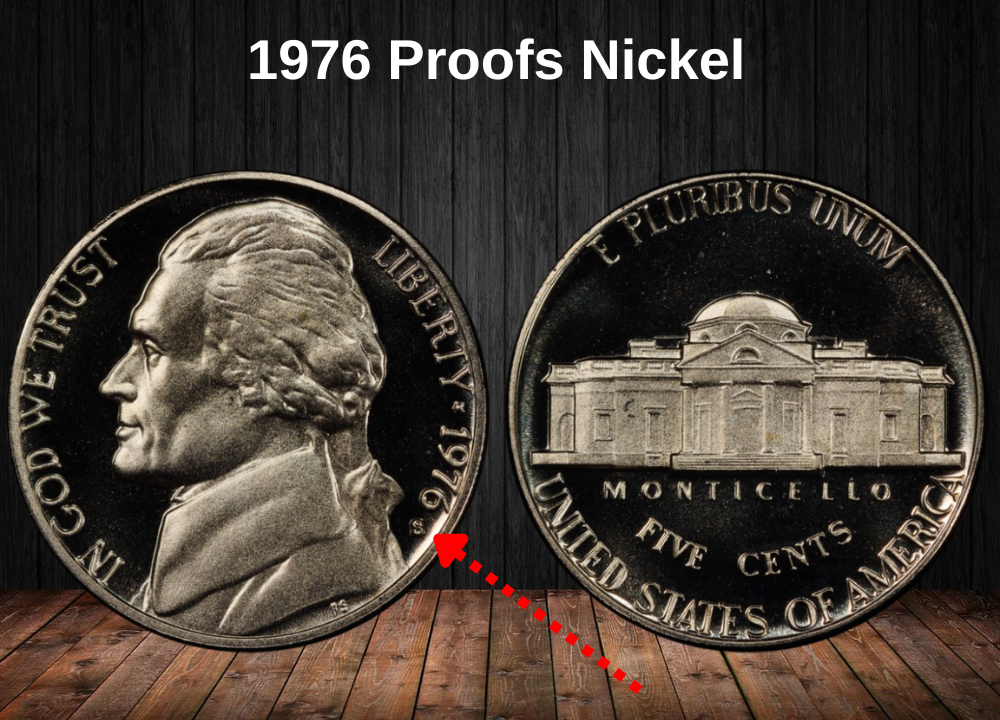
- Mintage: 4,149,730
- Proof grades PR60–PR65: Less than $1
- Higher Proofs PR66–PR69: $2 – $10
- Perfect Proof PR70: Valued around $500
- Auction record: A 1976-S PR70 Deep Cameo sold for $4,230 at Heritage Auctions in 2015.
Rare 1976 Nickel Errors List
Minting errors are a natural part of coin production, and the 1976 Jefferson nickel is no exception. While most error coins were destroyed at the mint, some slipped into circulation. These mistakes can range from subtle to dramatic — and collectors often pay significant premiums for them.
1. Struck on the Wrong Planchet
Sometimes, a blank intended for another coin (domestic or foreign) accidentally ends up in the nickel press. This results in a coin with the Jefferson design but incorrect size, weight, or composition.
a) Struck on a Dime Planchet
- Cause: A dime blank (planchet) entered the nickel press.
- Appearance: Partial or missing inscriptions, smaller diameter, and thinner planchet.
- Specifications:
- Diameter: 0.70 in (17.91 mm) vs. normal 0.84 in (21.21 mm)
- Weight: 0.07 oz (2.27 g) vs. normal 0.18 oz (5 g)
- Value: Depending on condition, can sell for $150 – $400+.
b) Struck on a Philippine 1-Sentimo Planchet
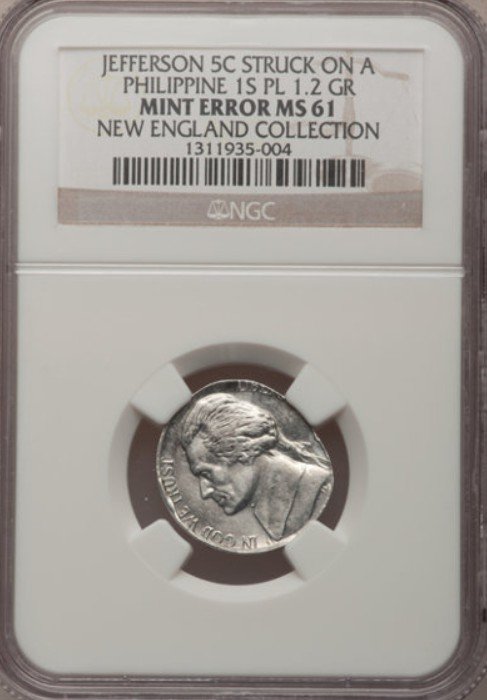
- Cause: A blank meant for a foreign coin was mistakenly used.
- Composition: 95% aluminum with magnesium.
- Weight: Just 0.04 oz (1.2 g) — much lighter than a standard nickel.
- Appearance: Slightly incomplete design due to smaller size.
- Value: Can exceed $300+ for well-preserved examples.
2. Curved Clip Error
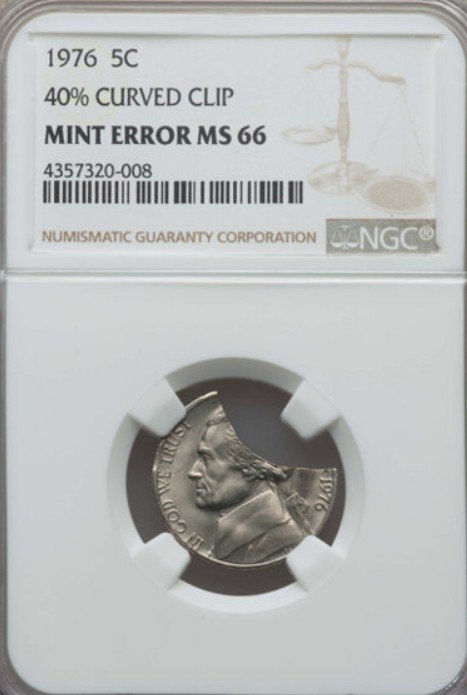
- Cause: A misfeed during blank cutting resulted in a coin with a missing curved section.
- Appearance: A clean, curved missing portion along the edge.
- Value: Up to $100, depending on severity and grade.
3. Off-Center Strike

- Cause: The blank was misaligned in the press, causing the design to be struck off-center.
- Appearance: A blank crescent-shaped area on the coin; collectors prefer examples showing ~50% off-center while retaining a full date.
- Value: Ranges from $50 to $250 based on offset percentage and condition.
4. Split Planchet Error
- Cause: Gas, dirt, or grease contamination during metal strip preparation weakened the blank, causing it to split before or after striking.
- Appearance: Flaking, peeling, or a layered surface.
- Value: Typically $20 – $75, but more if well-defined.
Where to sell your nickel?
Now that you’re aware of your nickel’s value, you may be curious about the best places to sell it. Don’t worry: here’s a rundown of some top online marketplaces where you can conveniently sell your nickels, along with their benefits and drawbacks.
Explore the best platforms for selling nickels online (advantages and disadvantages).
FAQ About the 1976 Jefferson Nickel
Are 1976 nickels valuable and scarce?
Generally, 1976 nickels are not rare. Hundreds of millions were minted, so circulated examples are worth only face value (5 cents). However, Full Steps (FS) varieties and certain mint error coins can be scarce — especially in high grades — and bring strong prices at auction.
Which 1976 nickels are particularly valuable?
Some record-breaking sales include:
- 1976 S DCAM nickel (PR 70) — Sold for $4,230 in April 2015 (Heritage Auctions)
- 1976 FS nickel (MS 67) — Sold for $4,025 in February 2010 (Heritage Auctions)
- 1976 S nickel (PR 70) — Sold for $2,975 in May 2022 (eBay)
- 1976 nickel (MS 69) — Sold for $2,175 in August 2022 (eBay)
- 1976 D FS nickel (MS 67) — Sold for $1,800 in April 2021 (Heritage Auctions)
- 1976 D nickel (MS 63) — Sold for $1,700 in July 2018 (eBay)
- 1976 S CAM nickel (PR 67) — Sold for $47 in September 2018 (eBay)
- 1976 S DCAM nickel (PR 68) — Sold for $15 in April 2018 (eBay)
How much are the 1976 nickels (No Mint Mark) worth?
- Circulated condition: Around $0.05 (face value)
- Mint state (MS 60–MS 66): $1 to $45
- High-grade Full Steps: $175 to $1,000+ depending on grade
- Top auction record: MS 69 FS example sold for $2,800+
Do 1976 nickels contain silver?
No. 1976 nickels are made of 75% copper and 25% nickel. Only Jefferson nickels minted from 1942–1945 (wartime nickels) contain 35% silver.
Where is the mint mark on a 1976 nickel?
- Denver (“D”) and San Francisco (“S”) mint marks appear on the obverse, to the right of Jefferson’s ponytail and just after the year.
- Philadelphia-minted nickels from 1976 have no mint mark.
What is the Full Steps (FS) designation?
“Full Steps” refers to a Jefferson nickel where at least five or all six steps on Monticello (reverse) are fully visible and sharply struck. FS nickels are rarer and more desirable, especially in high grades.
What are the most common 1976 nickel errors?
- Struck on wrong planchet (dime or foreign coin)
- Off-center strikes
- Curved clip
- Split planchet
- Broadstrike errors
These can range from $50 to several hundred dollars, depending on rarity and condition.
Is a 1976 proof nickel worth more?
Not necessarily — most 1976 proof nickels (San Francisco) are worth $1–$10 unless graded PR 70 or have cameo/ultra cameo contrast, in which case they can bring hundreds or even over $4,000 in rare cases.
What is the most expensive nickel ever sold?
- Overall record: 1913 Liberty Head nickel (CENTS Type 2, PR 66) — sold for $4,560,000 in 2018.
- Jefferson nickel record: 1954-S Full Steps (MS 67) — sold for $35,250 in 2020.
Should I clean my 1976 nickel before selling it?
No. Cleaning coins can severely reduce their value, even if they look shinier afterward. Collectors prefer original patina and luster.
How can I tell if my 1976 nickel is worth grading?
Look for:
- Extremely sharp strike with Full Steps
- No visible scratches, dents, or corrosion
- Mint luster across the entire surface
- Possible minting errors or unusual planchet characteristics
If you suspect high quality or an error, submit to PCGS or NGC for authentication and grading.

